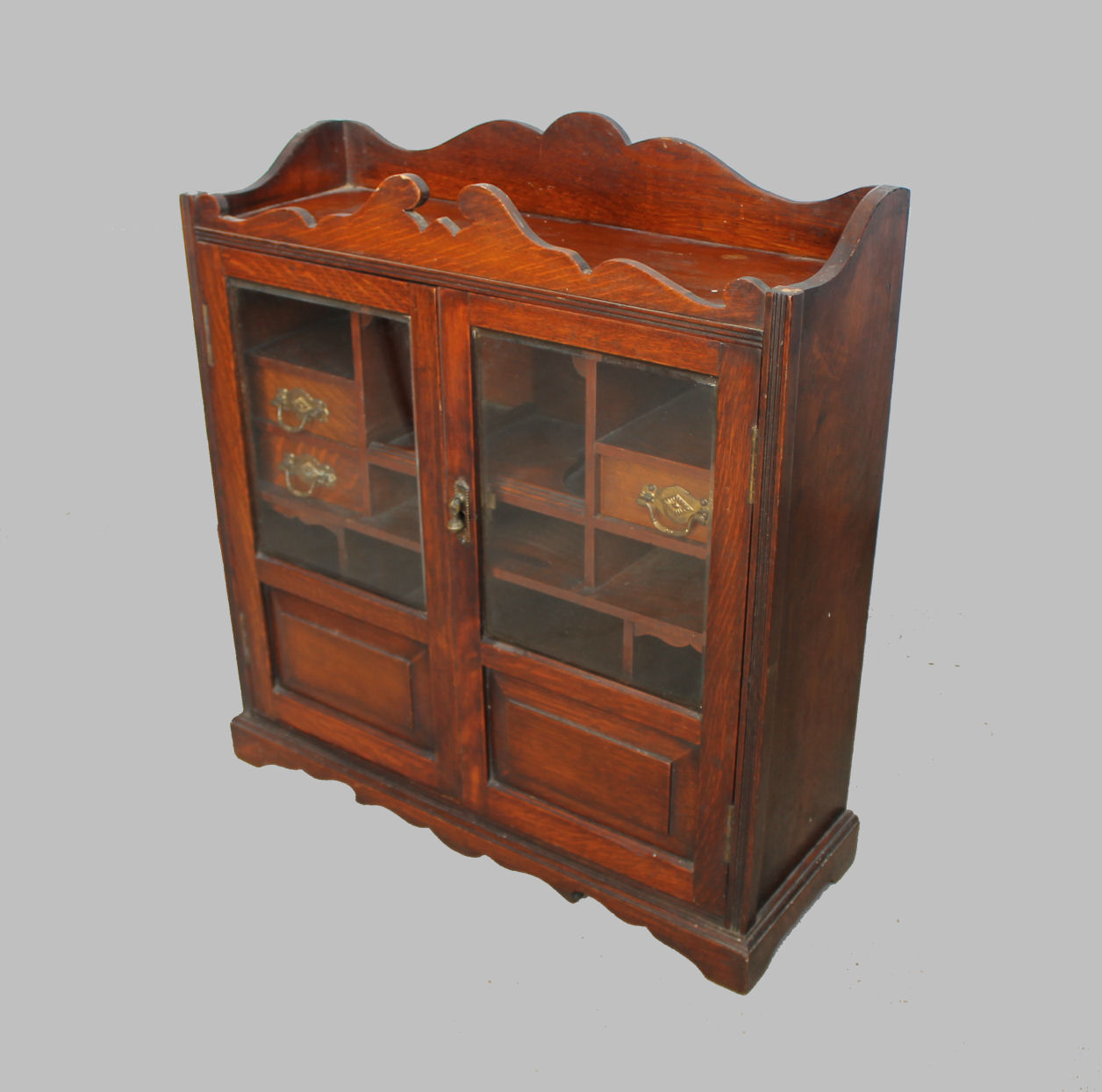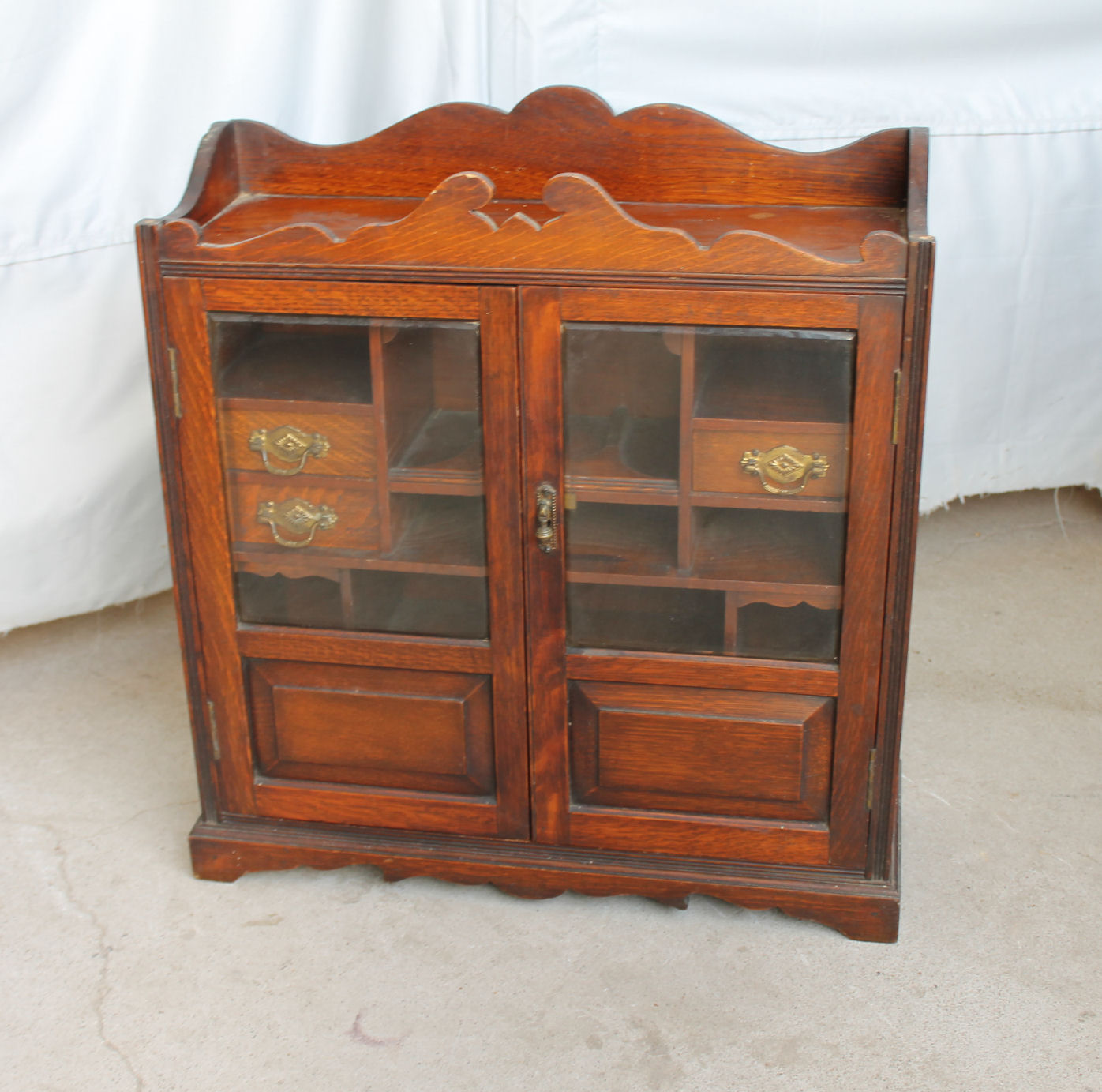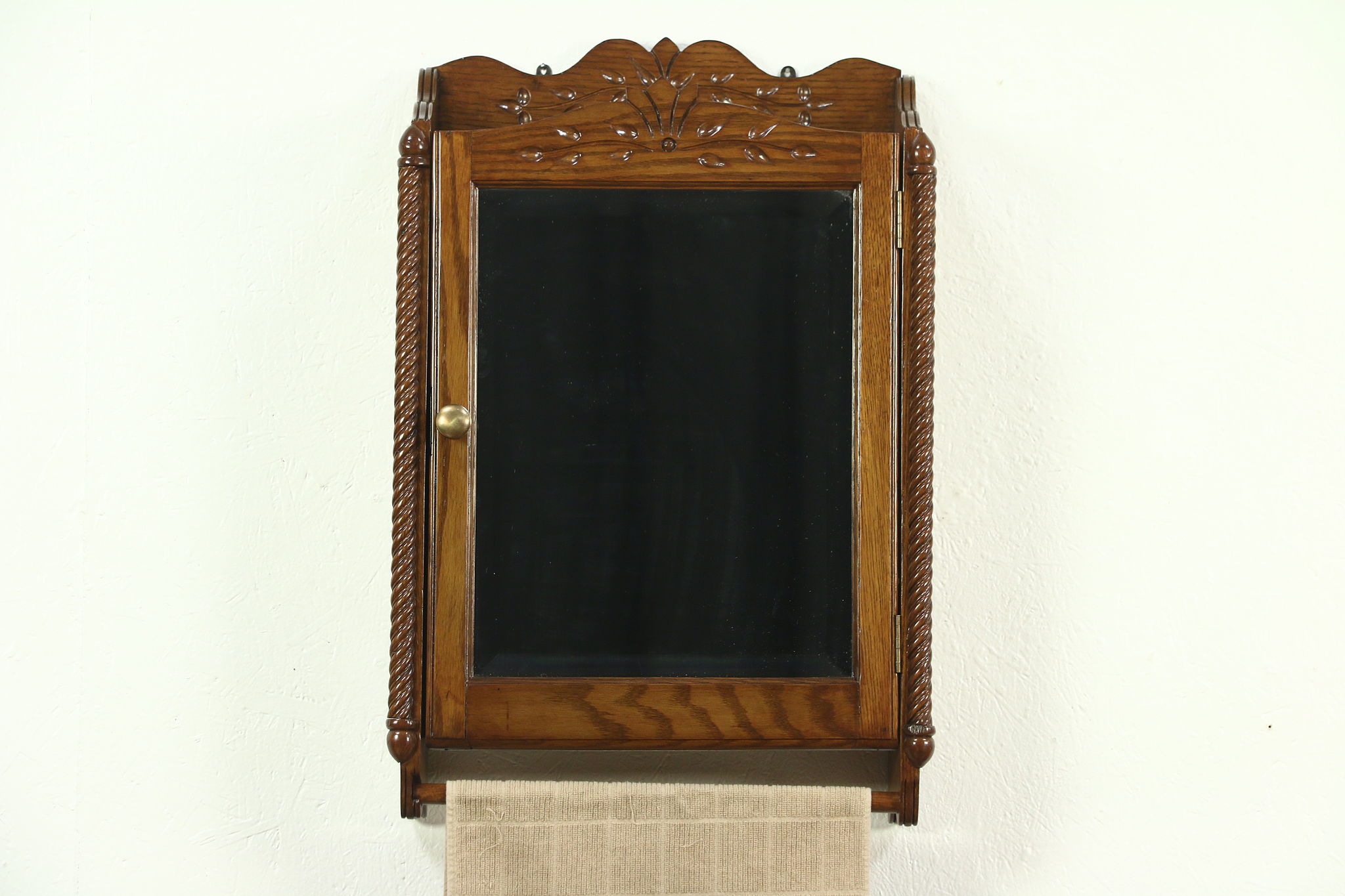Historical Significance of Antique Oak Medicine Cabinets

Antique oak medicine cabinets, often found in homes built in the early to mid-20th century, are more than just functional storage units. They serve as fascinating relics of a bygone era, reflecting the evolution of home healthcare practices, design aesthetics, and social values. Their sturdy construction and enduring style have ensured their survival and continued appeal, making them coveted pieces for collectors and homeowners alike.
Evolution of Medicine Cabinets
The evolution of medicine cabinets mirrors the broader transformations in healthcare and home design during the late 19th and early 20th centuries. Before the advent of modern medicine cabinets, household remedies and medications were typically stored in simple wooden boxes or drawers. The late 19th century saw the emergence of dedicated medicine cabinets, often made of wood, with a focus on functionality and practicality.
Early medicine cabinets were typically small, with shelves or drawers for storing essential medicines, bandages, and other supplies.
Oak emerged as a popular choice for medicine cabinets during the early 20th century, driven by its durability, natural beauty, and association with craftsmanship. The rise of the Arts and Crafts movement, which emphasized handcrafted items and natural materials, further fueled the popularity of oak furniture, including medicine cabinets.
Prominent Antique Oak Medicine Cabinets
Several examples of prominent antique oak medicine cabinets showcase the diverse styles and features that characterized this era. One notable example is the “Medicine Cabinet” designed by Gustav Stickley, a prominent figure in the Arts and Crafts movement. Stickley’s cabinet, crafted from solid oak, features a simple yet elegant design with a focus on functionality. Its clean lines, hand-crafted details, and durable construction exemplify the principles of the Arts and Crafts movement.
Stickley’s medicine cabinet is a testament to the movement’s emphasis on simplicity, functionality, and natural materials.
Another notable example is the “Mission Style Medicine Cabinet,” characterized by its simple, geometric forms, and use of natural materials. These cabinets often featured a single door with a mirror, and shelves for storing medicines and toiletries.
Mission-style cabinets were often designed to blend seamlessly with other furniture in the home, reflecting the movement’s emphasis on unity and harmony.
Social and Cultural Implications
Antique oak medicine cabinets were not merely storage units; they reflected the evolving social and cultural landscape of the era. They served as a symbol of home healthcare and personal hygiene, reflecting the growing importance of these practices in the early to mid-20th century.
The presence of a medicine cabinet in the home signaled a commitment to health and well-being, reflecting the changing attitudes towards healthcare and personal hygiene.
The placement of medicine cabinets, often in the bathroom or bedroom, also reflected the evolving social norms regarding privacy and personal space. The rise of the modern bathroom as a dedicated space for personal hygiene and grooming coincided with the popularity of medicine cabinets, highlighting their role in promoting individual health and well-being.
Design and Construction of Antique Oak Medicine Cabinets

Antique oak medicine cabinets, crafted in the late 19th and early 20th centuries, are testaments to the artistry and craftsmanship of the era. They were often meticulously designed and constructed, reflecting the prevailing aesthetic trends and the functional needs of the time.
Typical Dimensions and Ornamentation
Antique oak medicine cabinets typically varied in size, with smaller versions intended for personal use in bedrooms or dressing rooms, while larger ones were commonly found in bathrooms or communal spaces. They often featured intricate carvings and decorative elements, reflecting the popular architectural styles of the period.
- Dimensions: The typical dimensions of an antique oak medicine cabinet varied, but a common size was around 24 inches wide, 18 inches tall, and 6 inches deep. Smaller cabinets, often found in bedrooms, might be as small as 12 inches wide, while larger cabinets for bathrooms could be up to 36 inches wide.
- Ornamentation: The ornamentation on antique oak medicine cabinets was often elaborate, featuring intricate carvings, moldings, and decorative hardware. Common motifs included floral designs, geometric patterns, and scrollwork. These embellishments added visual interest and reflected the aesthetic tastes of the era. Some cabinets were even adorned with stained glass panels or mirrors.
Construction Techniques
Antique oak medicine cabinets were typically crafted using traditional joinery techniques and high-quality materials. The use of oak, a durable and beautiful hardwood, was common, as was the use of hand-cut dovetail joints and mortise and tenon construction for added strength and stability.
- Joinery: Dovetail joints, mortise and tenon joints, and other traditional joinery techniques were commonly used in the construction of antique oak medicine cabinets. These joints provided strength and stability, ensuring the cabinets could withstand the test of time. The use of hand-cut joints was a hallmark of the craftsmanship of the period, and it added to the beauty and durability of the cabinets.
- Wood Selection: Oak was the preferred wood for antique medicine cabinets due to its durability, strength, and attractive grain pattern. It was often chosen for its resistance to moisture and its ability to hold intricate carvings and details. The wood was typically seasoned and dried for months or even years before being used in construction, ensuring stability and minimizing the risk of warping or cracking.
- Finishing: Antique oak medicine cabinets were often finished with multiple coats of varnish, lacquer, or shellac, which provided a protective layer and enhanced the natural beauty of the wood. The finish also helped to create a smooth and easy-to-clean surface. Some cabinets were also painted or stained to achieve a specific color or effect.
Craftsmanship and Artistry
The craftsmanship involved in creating antique oak medicine cabinets was meticulous and time-consuming. Skilled artisans used hand tools and traditional techniques to construct these cabinets, often incorporating intricate details and decorative elements.
- Hand Tools: Antique oak medicine cabinets were crafted using hand tools, such as chisels, planes, saws, and hammers. The artisans of the time were highly skilled in using these tools to create precise joints, intricate carvings, and smooth surfaces.
- Traditional Techniques: Traditional joinery techniques, such as dovetail joints and mortise and tenon joints, were essential to the construction of antique oak medicine cabinets. These techniques ensured the cabinets were strong, durable, and aesthetically pleasing. The use of hand-cut joints was a testament to the skill and craftsmanship of the period.
- Decorative Elements: The decorative elements on antique oak medicine cabinets were often elaborate and intricately carved. The artisans of the time were skilled in creating floral designs, geometric patterns, and scrollwork, adding visual interest and reflecting the aesthetic tastes of the era.
Antique Oak Medicine Cabinets in Modern Interiors

Antique oak medicine cabinets, with their timeless elegance and sturdy construction, offer a unique blend of vintage charm and practical functionality, seamlessly integrating into modern interiors. These cabinets transcend mere storage solutions, becoming statement pieces that add character and warmth to contemporary spaces.
The Appeal of Antique Oak Medicine Cabinets in Modern Interiors
Antique oak medicine cabinets possess a captivating allure that stems from their rich history and craftsmanship. Their solid oak construction, often adorned with intricate details like beveled glass or brass hardware, exudes a sense of durability and timeless appeal. The patina developed over time, showcasing the passage of years, adds a layer of depth and character that complements the clean lines and minimalist aesthetics of modern interiors. Beyond aesthetics, antique oak medicine cabinets offer practical benefits, providing ample storage space for toiletries and medications while maintaining a sense of order and organization.
Integration into Various Interior Design Styles
Antique oak medicine cabinets exhibit remarkable versatility, seamlessly blending into a wide range of interior design styles.
- In contemporary settings, their rustic charm provides a counterpoint to sleek lines and minimalist palettes, adding a touch of warmth and character.
- In farmhouse-style interiors, antique oak medicine cabinets complement the rustic aesthetic, blending seamlessly with reclaimed wood accents and vintage-inspired decor.
- In transitional spaces, they bridge the gap between traditional and contemporary styles, offering a touch of vintage elegance while maintaining a clean and modern feel.
Designing a Bathroom Space with an Antique Oak Medicine Cabinet
Consider a bathroom with white subway tile walls and a sleek, modern vanity. The antique oak medicine cabinet, with its rich wood grain and brass accents, serves as a focal point, adding a touch of vintage charm and warmth. The cabinet’s ample storage space accommodates toiletries, medications, and other essentials, while its beveled glass doors reflect light, creating a sense of spaciousness. A large, framed mirror above the vanity reflects the light, further enhancing the sense of openness. The space is completed with a soft, neutral rug and plush towels, creating a calming and inviting atmosphere.
An antique oak medicine cabinet, with its intricate carvings and aged patina, can be a stunning focal point in any bathroom. But what if you want to modernize its look while preserving its charm? Consider replacing its solid doors with sleek glass panels, allowing you to showcase your curated collection of toiletries.
Learn how to build glass cabinet doors yourself with this comprehensive guide how to build glass cabinet doors , and give your antique medicine cabinet a fresh, contemporary twist.
Antique oak medicine cabinets, with their timeless charm and sturdy construction, have become a sought-after addition to vintage-inspired bathrooms. If you’re looking for a touch of classic elegance, consider a vintage medicine cabinet antique bronze finish , which complements the rich tones of oak beautifully.
These cabinets not only provide practical storage but also add a touch of history and character to your space, making it feel both inviting and stylish.
